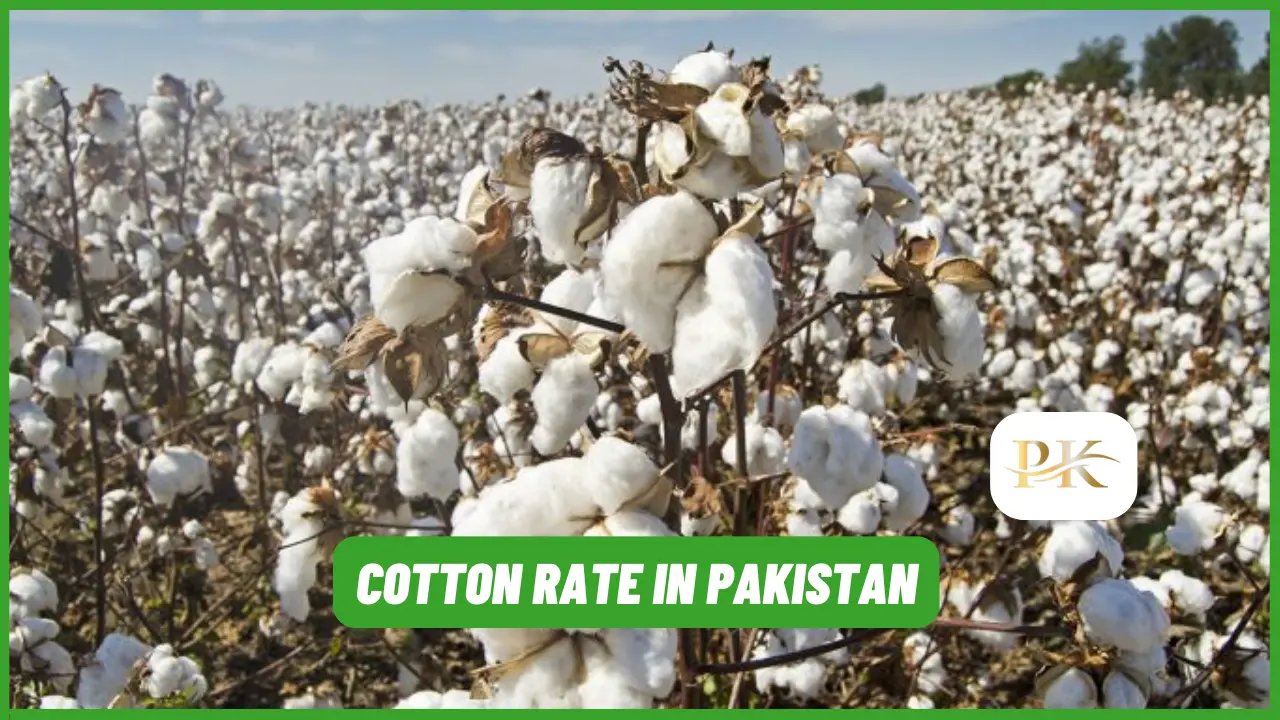Cotton Rate in Pakistan: How Prices Affect Agriculture and Trade
Cotton rate in Pakistan is a pivotal factor that drives the agricultural and economic framework of the country. Known as one of the world’s largest cotton producers, Pakistan’s reliance on this crop spans from feeding the textile industry to supporting millions of farmers’ livelihoods.
With prices fluctuating due to various local and global factors, the cotton market holds a mirror to the challenges and opportunities within Pakistan’s trade and agriculture sectors.
Today Cotton Rate in Pakistan
The cotton rate in Pakistan fluctuates daily due to market dynamics, including demand, supply, and external factors. Monitoring these rates is crucial for farmers, traders, and stakeholders in the textile industry.
Today Cotton Rate in Punjab
Cotton Price in Punjab
| Region | Minimum Price | Maximum Price | Average Price |
|---|---|---|---|
| Mian Channu | PKR 6,499 | PKR 7,605 | PKR 6,990 |
| Dunga Bunga | PKR 7,060 | PKR 8,000 | PKR 7,500 |
| Rahim Yar Khan | PKR 6,550 | PKR 7,806 | PKR 7,140 |
| Toba Tek Singh | PKR 6,150 | PKR 7,600 | PKR 6,750 |
| Sahiwal | PKR 6,050 | PKR 7,470 | PKR 6,760 |
| Yazman Mandi | PKR 6,070 | PKR 7,210 | PKR 6,550 |
| Vehari | PKR 6,290 | PKR 8,040 | PKR 6,720 |
| Khanewal | PKR 6,035 | PKR 7,599 | PKR 6,840 |
| Haroonabad, Bahawalnagar | PKR 7,000 | PKR 7,450 | PKR 7,400 |
| Lodhran | PKR 6,560 | PKR 7,660 | PKR 7,050 |
| Fort Abbas | PKR 6,740 | PKR 7,600 | PKR 7,350 |
| Faqirwali | PKR 7,020 | PKR 7,840 | PKR 7,350 |
| Shujabad | PKR 6,520 | PKR 7,400 | PKR 7,000 |
| Marot | PKR 7,040 | PKR 7,390 | PKR 7,135 |
| Chichawatni | PKR 6,260 | PKR 7,970 | PKR 7,270 |
Also Visit: Wheat Price in Pakistan
Today Cotton Rate in Sindh
Cotton Price in Sindh
| Region | Minimum Price | Maximum Price | Average Price |
|---|---|---|---|
| Shikarpur | PKR 7,210 | PKR 8,680 | PKR 7,570 |
| Ranipur | PKR 8,510 | PKR 8,710 | PKR 8,610 |
| Umarkot | PKR 4,910 | PKR 6,410 | PKR 6,060 |
| Digri | PKR 4,410 | PKR 5,410 | PKR 5,019 |
| Ghotki | PKR 6,610 | PKR 7,210 | PKR 6,960 |
| Badin | PKR 4,410 | PKR 5,410 | PKR 5,010 |
| Mehrabpur | PKR 7,510 | PKR 7,706 | PKR 7,610 |
| Hyderabad | PKR 5,010 | PKR 8,020 | PKR 6,660 |
| Salehput | PKR 8,510 | PKR 8,710 | PKR 8,610 |
| Shahpur Chakar | PKR 5,400 | PKR 6,310 | PKR 6,040 |
| Naukot | PKR 7,582 | PKR 9,382 | PKR 8,462 |
| Tando Allahyar | PKR 5,100 | PKR 6,400 | PKR 5,900 |
| Nawab Shah | PKR 5,400 | PKR 6,360 | PKR 5,800 |
| Jhudo | PKR 4,410 | PKR 5,410 | PKR 5,010 |
| Qazi Ahmed | PKR 7,010 | PKR 7,710 | PKR 7,485 |
| Khuzdar | PKR 7,310 | PKR 8,010 | PKR 7,660 |
| Daharki | PKR 6,382 | PKR 8,782 | PKR 7,582 |
Today Cotton Rate in Balochistan
Cotton Price in Balochistan
| Region | Minimum Price | Maximum Price | Average Price |
|---|---|---|---|
| Kharan | PKR 6,999 | PKR 7,499 | PKR 7,299 |
| Wadh | PKR 8,195 | PKR 8,598 | PKR 8,285 |
| Turbat | PKR 6,995 | PKR 7,485 | PKR 7,290 |
| Nal | PKR 7,790 | PKR 8,780 | PKR 8,330 |
| Sibi | PKR 6,990 | PKR 7,190 | PKR 7,090 |
| Khuzdar | PKR 7,280 | PKR 7,960 | PKR 7,970 |
| Lasbela | PKR 7,680 | PKR 8,190 | PKR 7,970 |
| Panjgur | PKR 7,095 | PKR 7,400 | PKR 7,220 |
| Uthal | PKR 7,193 | PKR 7,380 | PKR 7,290 |
| Winder | PKR 7,090 | PKR 7,394 | PKR 7,240 |
Trade and Export Implications
The global cotton market is competitive, with countries like India and China vying for dominance. To succeed, Pakistan must focus on quality and cost-efficiency.
International trade agreements and favorable export policies can significantly boost Pakistan’s presence in the global market, improving revenue and market share.

Factors Affecting Cotton Rates in Pakistan
The factors influencing cotton rates are complex and interconnected, impacting farmers and traders alike. Understanding these elements is essential for navigating the market.
- Weather Conditions and Extreme Events Unpredictable weather, including heavy rains and droughts, significantly impacts cotton yields. Extreme weather events disrupt supply, driving up prices.
- Government Policies and Subsidies Policies around seed availability, subsidies, and export regulations also shape cotton rates. Government intervention can stabilize or destabilize the market depending on how policies are implemented.
- Supply and Demand Dynamics The balance between production levels and domestic or international demand is another crucial factor. Oversupply can depress prices, while shortages lead to spikes.
Also Visit: Mustard Price in Pakistan
Overall Conclusion
Cotton rates in Pakistan are a vital indicator of the health of the agricultural and textile sectors. From influencing farmers’ livelihoods to shaping the country’s export potential, the impact of cotton prices cannot be overstated.
With strategic improvements in farming practices, technology adoption, and favorable trade policies, Pakistan can secure its position as a leading cotton producer and exporter.






